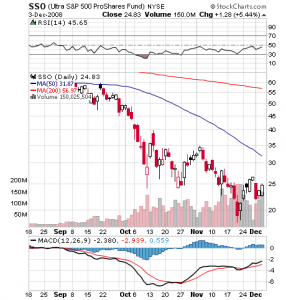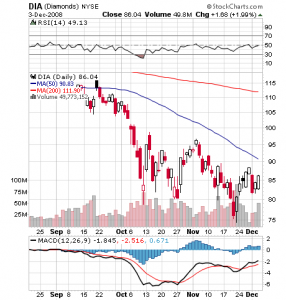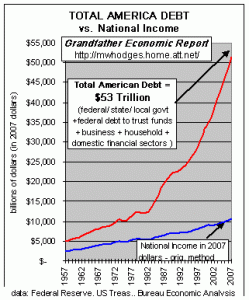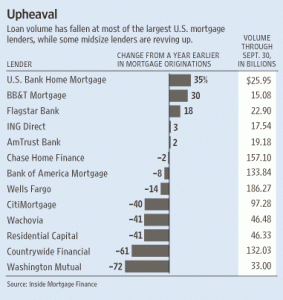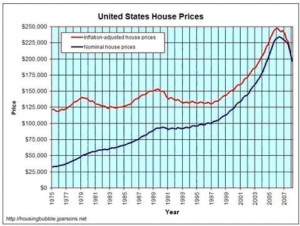If you only read the headlines, you are probably under the impression that the economy is totally collapsing.
The economy is weak and many are paying the price for being over leveraged, but when you see hysterical headlines, it makes sense to examine the data. For example, consider the following headline which seems to imply that retail sales are collapsing.
Retail Sales Notch Biggest Drop in 39 Years
Further in the article we learn that:
Overall, same-store sales for November fell by 2.7% from last year, according to the International Council of Shopping Centers Inc.’s index of 37 stores, the biggest drop since 1969, the first year that the council began collecting data. Same-store sales are closely tracked because they provide a snapshot of a retailer’s results, unaffected by new store openings.
“It’s an awful start to the holiday season,” said Michael Niemira, the council’s chief economist and director of research, who lowered his combined November and December sales forecast to flat to a 1% drop. “It looks to us as if it will be the weakest holiday season in our record,” he said.
Despite the gloomy retail news, many retail stocks rose Thursday, suggesting some investors believe retail sales have bottomed. Despite a 2.5% drop Thursday in the Dow Jones Industrial Average, shares of Nordstrom Inc. rose 10.2%, Abercrombie & Fitch Co. 7.8% and Tiffany & Co. 10.8%.
Should this headline have been “Retail Sales Show Modest Decline“? A drop in sales of less than 3% given the lack of confidence by the American consumer (spurred no doubt by the headlines) does not really seem that catastrophic. In addition, the rise in the stock price of many retailers on this news also implies that many investors believe that the worst has been seen.
The same retail news is examined by Ken Fisher who arrives at a more optimistic conclusion.
The bearish headlines have gotten bolder, and the panic has gotten worse (notwithstanding the late-November rebound). So I’m even more bullish now.
On Nov. 14 the headlines screamed, “October Retail Sales Down–Worst Ever Recorded.” Stocks buckled. But virtually no one noticed that the “recording” had started only in 1992. Since then we’ve had just one recession. The same reporting failed to mention anywhere that October sales, excluding autos, gasoline and building materials, which everyone already knew about, were down only 0.5%, which was hardly remarkable.
Simply nowhere in the mass media have I seen it reported how strong third-quarter earnings were. Roughly two-thirds of firms reported higher earnings through Nov. 25. Also, two-thirds reported earnings stronger than analysts’ latest expectations. Yet we only heard about the laggards. Excluding financials, 67% of companies reported earnings better than the year before, and 68% exceeded expectations.
On Oct. 13 the s&p 500’s dividend yield was 3.74%. That means it exceeded the yield on the ten-year Treasury note for the first time since 1958. Did you see a headline about that?
Business inventories are at record lows for the start of a recession, and that fact should make the recession milder.
I have previously observed that now may be a time to go long, based on the the incredibly negative headlines (Breathless Hysteria Overdone?).
The bad news headlines are really good news if you consider the following:
– lower spending may imply that the personal savings rate is increasing as the consumer rebuilds his balance sheet and becomes more frugal. If the consumer wisely chooses to spend less and save more, retail sales will of course decline somewhat – you can’t have it both ways.
– much concern has been expressed that credit card debt will be the next crisis for lenders. To the extent that credit card companies are reducing credit lines and consumers are spending less, this should help to mitigate this potential problem.
– lower retail spending may imply a reversal in attitude towards the use of debt to finance every purchase, which would be a positive development.
-a new found frugality by the consumer and a reluctance to take on more credit, although a negative factor for the retail industry, will in the long run be a positive factor for the country’s financial system and the consumer.
